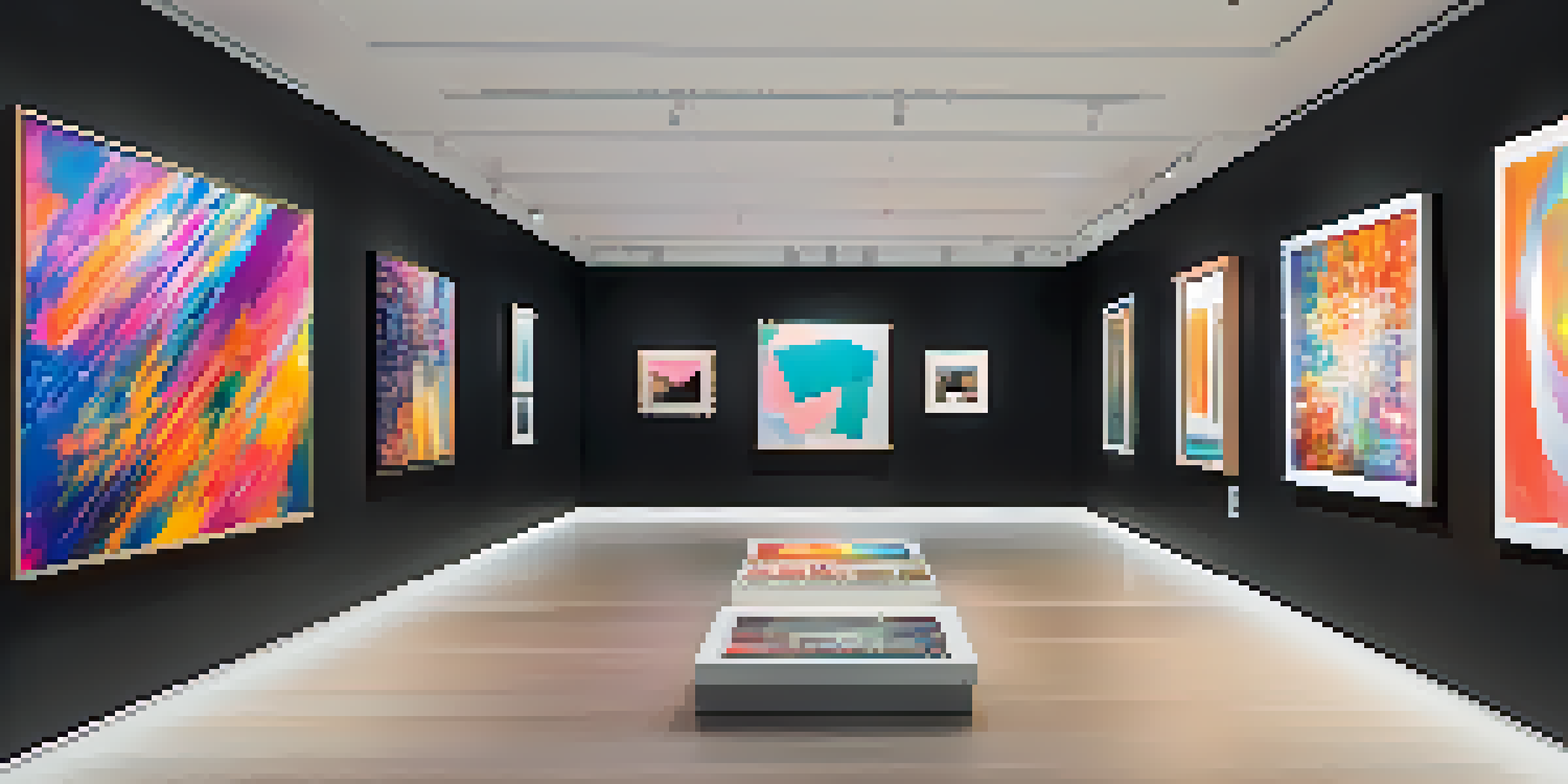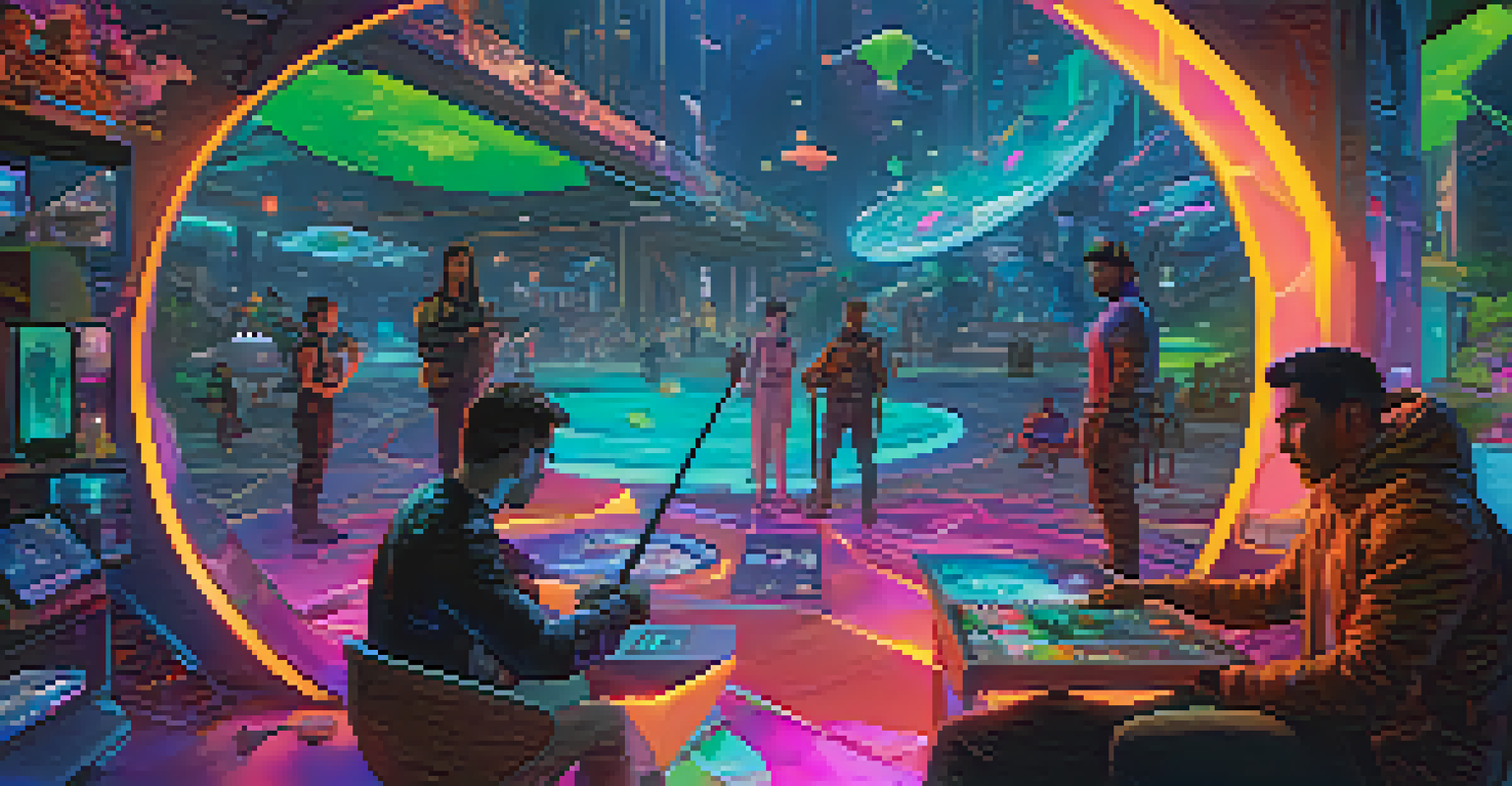Understanding NFTs: The Future of Digital Asset Ownership

What are NFTs and Why Do They Matter?
NFTs, or Non-Fungible Tokens, are unique digital assets verified using blockchain technology. Unlike cryptocurrencies like Bitcoin, which are interchangeable, each NFT has distinct information that makes it one-of-a-kind. This uniqueness is what gives NFTs their value, allowing artists and creators to own and sell digital works in a way that was previously impossible.
NFTs represent a paradigm shift in how we perceive ownership and authenticity in the digital age.
Imagine owning a piece of digital art that no one else can claim as theirs—this is the essence of NFTs. They can represent anything from artwork and music to virtual real estate and even tweets. For creators, NFTs open up new revenue streams and opportunities for engagement with their audience.
As we delve deeper into the digital age, understanding NFTs becomes crucial. They are not just a passing trend but a significant shift in how we perceive ownership and authenticity in the digital realm.
The Technology Behind NFTs: Blockchain Explained
At the core of NFTs is blockchain technology, which serves as a secure and transparent ledger. Each transaction involving an NFT is recorded on this blockchain, making it easy to verify ownership and authenticity. This technology eliminates the possibility of duplication, ensuring that your digital asset remains exclusive.

Think of blockchain as a digital filing cabinet where each drawer contains a unique item, and everyone can see who owns what without being able to alter it. This decentralized nature of blockchain fosters trust, as it removes the need for intermediaries like galleries or auction houses to authenticate and sell art.
NFTs Redefine Digital Ownership
NFTs allow creators to own and sell unique digital assets, fundamentally changing how we perceive ownership in the digital realm.
By understanding how blockchain works, we can appreciate the security and permanence that NFTs offer. This foundational technology is what makes digital ownership not only possible but also reliable.
How NFTs Are Changing the Art World
NFTs have revolutionized the art industry by providing artists with direct control over their work. Previously, artists often had to rely on galleries or agents to sell their pieces, which could limit their reach and profits. With NFTs, artists can sell their work directly to consumers, retaining a larger share of the revenue.
The future of NFTs is about integrating unique digital assets into our everyday lives, enhancing creativity and engagement.
Consider the story of digital artist Beeple, who sold an NFT for a staggering $69 million. This sale not only highlighted the potential financial rewards for artists but also brought mainstream attention to the concept of digital art ownership. Such examples encourage more artists to explore this new medium.
Moreover, NFTs enable artists to earn royalties from future sales. This means that every time their work is resold, they receive a percentage of the sale, creating a sustainable income model. It's a win-win for both artists and collectors.
The Role of NFTs in Gaming and Virtual Worlds
NFTs are making waves in the gaming industry by allowing players to truly own in-game assets. Traditionally, items earned in games could only be used within that specific game, but NFTs change that narrative by enabling players to buy, sell, and trade assets across different platforms. Imagine owning a unique sword in one game that you could sell or use in another.
This ownership paradigm not only enhances player engagement but also introduces real-world value to digital items. Players can invest in their gaming experience by purchasing unique items, which can appreciate over time, similar to how collectibles function in the real world.
Blockchain Ensures NFT Security
The underlying blockchain technology provides a secure and transparent way to verify NFT ownership and authenticity.
As the lines between gaming and reality blur, NFTs are poised to redefine how we interact with digital environments. The potential for virtual real estate and assets is just the tip of the iceberg.
NFTs and Collectibles: A New Era of Collecting
Just as traditional collectibles like trading cards have value, NFTs are creating a new market for digital collectibles. From virtual trading cards to unique digital memorabilia, collectors can buy and sell these items in online marketplaces. The appeal lies in owning a piece of digital history that can be displayed or traded.
For example, NBA Top Shot allows fans to purchase officially licensed digital highlights, turning memorable moments into collectible assets. This platform has attracted a new generation of collectors who are excited about the intersection of sports and technology.
The thrill of collecting is alive in the NFT space, providing a fresh take on what it means to be a collector. With the ability to showcase and trade these items online, the community aspect of collecting is stronger than ever.
Challenges and Criticisms of NFTs
Despite their growing popularity, NFTs face several challenges and criticisms. One major concern is the environmental impact of blockchain technology, particularly in proof-of-work systems that require significant energy consumption. As awareness of climate issues increases, many are questioning the sustainability of NFTs.
Additionally, the market is rife with speculation, leading to inflated prices and potential scams. This volatility can be intimidating for newcomers, making it essential to approach NFT investments with caution. Understanding the risks is crucial for anyone considering entering this space.
NFTs Transform Art and Gaming
NFTs empower artists and gamers by enabling direct ownership and trading of digital assets, opening up new revenue streams and engagement opportunities.
Critics also argue that NFTs may not provide true ownership, as the digital files can still be copied. However, owning an NFT means holding a verified claim to that digital asset, even if the file itself is replicated. This nuanced perspective is important as we navigate the complexities of digital ownership.
The Future of NFTs: Trends to Watch
Looking ahead, the future of NFTs appears promising, with various trends emerging. One significant trend is the integration of NFTs into everyday life, from music and fashion to real estate. Artists and brands are exploring innovative ways to engage audiences through NFTs, creating unique experiences that blend the virtual and physical worlds.
Additionally, as technology evolves, we may see more user-friendly platforms that make it easier for everyday individuals to create, buy, and sell NFTs. This democratization of the NFT space could lead to more diverse content and increased participation from a broader audience.

As the concept of digital ownership continues to evolve, NFTs are likely to play a pivotal role. Keeping an eye on these trends will help us better understand how NFTs can shape our digital future.